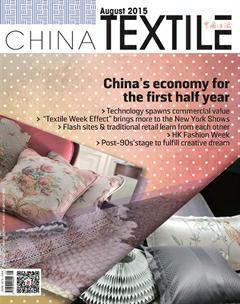Flash sites & traditional retail learn from each other
by+ZHENG+Ran
A few years ago, flash sale sites were so hot, everyone from the Groupon to local newspapers offered bargain shoppers daily, if not hourly, deals. Some observers went so far as to say such sites would be the end to traditional retail. But then the approach to retail changed altogether: apparel brick and mortars saw the disruption and raised their game, drawing on their real ace in the hole - locations. And flash sites evolved vis-à-vis their offerings and presentation.
In a 2011 article titled "Retailing Revolution: Category Killers on the Brink," the Harvard Business School said retailers needed to consider, "What consumer needs cannot be satisfied by e-commerce?" Apparel stores benefit greatly from shopper desire to touch and feel clothes, as well as try on garments. So stores offered deals via customer devices, increased their discount outlets -- and kept the coveted designer brands to themselves.
Meanwhile, the flash sites have responded.
Whether its Rue La La, Haute Look, Gilt or one of a number of other flash sites, there are plenty of "here today, gone tomorrow" options. Thats a good thing for the three in four consumers who say they enjoy bargain hunting, a sentiment thats strongest among women (84%), according to the Cotton Incorporated Lifestyle Monitor? Survey. Additionally, 52% say shopping online is more convenient than going in-store.
Flash sites sprang up during the re- cession, when retailers and brands regularly found themselves with excess inventory. But as the economy improved, so did retail merchandising. Stores learned to carefully control inventory --and thats limited the overstock.
On top of that, the NPD Groups Marshal Cohen, chief industry analyst, points out that the increase in outlet stores like Nordstrom Rack, Last Call by Neiman Marcus, Saks Off 5th, as well as the latest entrants Macys Backstage and Off-Aisle by Kohls, shows traditional stores are fighting back. These moves not only pose competition to the flash sites, they disrupt their supply.
"Where do they get the product?" Cohen asks. "As more and more brands sell direct to consumer and the depart- ment stores feed their outlets, the deals are being spread thin across a wider range of places."
In addition to increased outlet locations, Cohen says flash sites are competing with changing consumer shopping habits.
"We buy more on need now," he states."
Corlett agrees, citing a "How America Shops" report. "Forty percent of women say, Ive cut back on shopping and realize I didnt need all that stuff I was buying."
Thats resulted in flash sites adding"experiences" like Gilt Citys custom subscriptions to the Metropolitan Opera, or travel such as Rue La Las hotel and spa deal for Playa del Carmen, Mexico.
To attract and keep bargain hunters, flash sites have taken a page from traditional retails book with loyalty programs (Ideel), magazines (Gilt), and contests (Beyond The Rack). At Rue La La, strategies include The Style Guide, where, for example, users can learn when to tuck or untuck a shirt, and then follow a link to pick out shirts to "try a new tuck."
A mobile component is vital as the Monitor? finds that when shopping for clothes, 7 in 10 use a computer or laptop, followed by a mobile or smartphone (31% -- up from 27% in 2014), tablet (27%), and smart TV (9%). On average, consumers spend equal time(100 minutes) shopping for apparel both online and in-store.
"Mobile brings a completely new dynamic into play, just like desktop did," he said. "At Rue, we spend time making sure that our assortment is curated enough that you can shop our entire store in less than 15 minutes every day. So, very much our mindset is how do we create shopping experiences and content rich experiences that allow you to get inspired and discover fashion in all the time slices you have in your day with your mobile phone?"
Recently on Yahoo Finance, Steven Davis, the flash sites CEO, said consumers want to "buy, get inspired, and discover in a multi-brand shopping format."
Of course, consumers still like to buy apparel in stores. Thats because 79% say they are "very or somewhat concerned" about shipping costs and clothing quality when shopping online, followed by return policies (77%), not being able to try on apparel (72%), and not being able to physically touch the clothes (64%), the Monitor? survey shows. Data from the U.S. Census Bureau shows e-commerce accounted for just 7% of all U.S. retail sales last quarter, although apparel accounts for much of that. Emarketer Inc. predicts apparel and accessories will account for about 11% of total U.S. web sales in 2015.(Table)
Ken Morris, principal, Boston Retail Partners, says todays retailers are doing more than just moving product.
"Instead of taking the mob approach, tech savvy brands are creating the same excitement via personalized promotions on an individual level," Morris says. "These retailers are leveraging customer context, which we define as the interrelated factors of customer insights and environmental conditions, to make the shopping experience relevant and intimate."
Morris says traditional retail has taken e-commerces ability to hone in on customer preferences using elements like real-time retail technologies and personalized promotions to offer shoppers custom deals. And, he adds, brick and mortar might well see competition from a creative, if not a bit retro, version of flash sales.
“Another new potential trend is the physical pop-up store," Morris says,"where a portable store will pop-up for a short time and close quickly to move to the next hot spot -- similar to the food truck trend."

